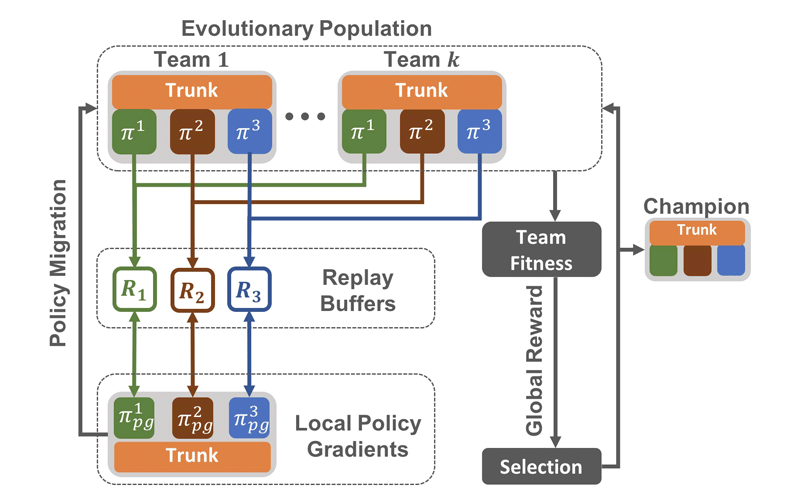
Artificial Intelligence is a topic that frequently make headlines. Most of the time, it's either Google or Facebook.
In other times, include Intel. While the company doesn't make lots of noise in the field, it does have many to boast under its portfolio. For example its researchers have advanced the state of AI chips, have worked on neuromorphic computing, and deep learning. This time, it's pursuing what's called the 'hive mind'.
This project is built on top of the company's Multiagent Evolutionary Reinforcement Learning (MERL), which could create a sentient AI, due to its ability in assimilating organic beings into one place.
With MERL, Intel is trying ways to teach intelligent machines to collaborate, so they can put their minds together to solve tasks that are too difficult to solve if the agents work on it individually.
According to Intel in the announcement:
Intel continued by saying:
"For the sparser team objective, we utilize an evolutionary method similar to our approach in CERL. This enables us to optimize both objectives simultaneously without explicitly mixing them together."
"We construct a population of teams, where each team is evaluated on its performance on the actual task. Following each evaluation, strong teams are retained, weak teams are eliminated and new teams are formed by genetic operations like mutation and crossover on the elite survivors."
Another way of saying it, Intel wants AIs with different capabilities, to work together, by giving them the same objective.
And using reinforcement learning, which is the RL in MERL, the researchers tweak the AI‘s training paradigm to ensure that it’s rewarded whenever it accomplishes a goal, thus keeping the machine on task.
This is meant to ensure that the AI can learn how to do things, without being told what to do.

The point, is to make machines to figure things out by themselves, independently from human intervention.
While the system is complex and involves novel techniques, the basic ideas behind the approach is fairly intuitive.
Intel’s MERL system allows multiple AI agents to solve a larger problem, by breaking that problem down into different individual tasks. Then, those individual tasks can be handled by different individual agents.
The collaboration can speed up the learning process, as well as the time to accomplish the task.
According to Intel, this In real life, "could be a search-and-rescue requirement."
With the advancement, the team at Intel wants to continue to push the state-of-the-art for decision making systems.
"We are exploring similar problems involving multi-task learning in scenarios that have no well-defined reward feedback. We are also exploring the role of communication in solving such tasks. All of these represent a class of problems that are a step up from simple perception - and a step toward achieving cognitive systems that can perceive and act on their own."
Examples include using MERL to improve many areas its software and hardware systems, like making the RL agents to learn how to manage memory on a hardware accelerator efficiently by efficiently allocating chunks of data to various memory components. The Evolutionary Graph RL is able to virtually quadruple the speed of execution on hardware as compared to the native compiler.
